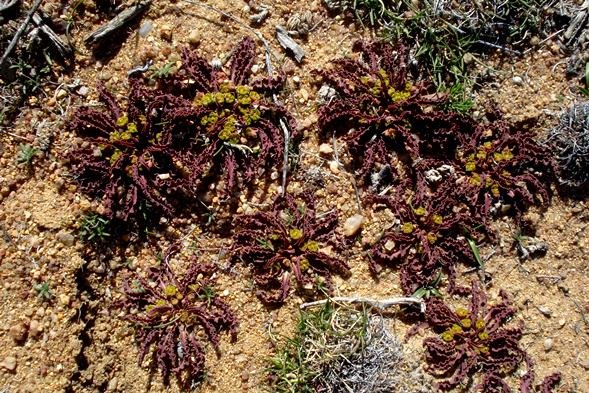Euphorbia tuberosa previously E. crispa

It seems as if these northerly Euphorbia tuberosa plants that went by the name of E. crispa in the past do look different from those that defined E. tuberosa earlier and geographically in the south.
The long-leaved, crisp-margined plants grow in Namaqualand on the Kamiesberg and towards Loeriesfontein. The leaf colouring, the long, narrow leaves with their elaborately crisped and upturned margins are not easily found on specimens of the southerly distribution, say from Vanrhynsdorp to the Cape Peninsula. The maroon colouring is, however, sometimes replaced by grey-green on plants of the north as well, given the prevailing conditions.
Flower structure, the prostrate leaf rosettes and above all, the results from genetic investigation finally determine how earlier classifications by appearance becomes overruled.
E. tuberosa is sometimes called the tuber milkball on account of its underground tuber. Damaged plant parts exude a milky latex, common in Euphorbia (Grenier, 2019; Frandsen, 2017; Vlok and Schutte-Vlok, 2015; Manning and Goldblatt, 1996; iNaturalist).

